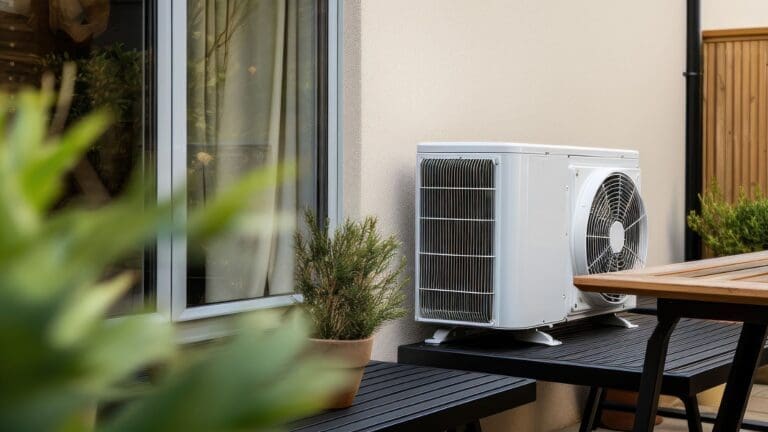
Released today, the report highlights the workforce growth needed to meet the previous government’s target of 600,000 heat pump installs per year by 2028, including from the electrical, plumbing, heating and groundwork trades, as well as admin and sales support. It doesn’t include roles in the broader heat pump supply chain, such as manufacturing and assembly of heat pumps.
It puts that figure at 41,000 full-time roles, rising to 122,000 by 2035, when the installation target rises to 1.6 million per year.
With over 7,800 individuals completing a recognised heat pump qualification in 2023 – a 133% increase on 2022 levels – and more than 7,000 having already completed training in the first three quarters of 2024, interest is growing.
Lack of market confidence a ‘limiting factor’
However, the report reveals that despite positive growth in recent heat pump installer training rates, there is a gap between the number of trained individuals and the number of active heat pump installers working in the market, with around 39% of those who complete a training course currently not going on to install the technology.
Commenting on the report, HPA Chief Executive Charlotte Lee, said: “Today’s publication highlights the need for clarity and action from the Government to increase and sustain interest in heat pump training to meet the UK’s heat pump deployment targets.
“The availability and provision of courses are not the limiting factors in this instance; rather, there is a lack of confidence in the market and uncertainty about the heat pump deployment pipeline.
“Now is not the time for complacency. Although we have seen continued growth and interest in heat pump training, this momentum must continue.
“It is essential that action is taken to encourage those trained to apply their skills and gain the experience that must go hand in hand with the training if we are to have the competent workforce needed to deliver the required growth at scale and speed.”
Dr Richard Hauxwell-Baldwin, Head of Policy, Research and Campaigns at The MCS Foundation, said: “Training rates to develop a skilled workforce to meet the demand of net zero heating are growing, but it is vital that those who train go on to install heat pumps in order to decarbonise UK homes.
“To ensure continued confidence and growth in the sector, the Government must introduce long-term policies such as the Future Homes Standard, making heat pumps the default in all new homes, and provide clarity to the market to support investment in the transition to clean heat.”
Future scenarios for heat pump demand
The report considered two different scenarios. One is modelled on the previous government’s heat pump installation targets, as outlined above. The second is modelled according to other policies already in place, and those set to come into force in the future, such as the Future Homes Standard – where heat pumps are expected to be mandated for new builds – and the Clean Heat Market Mechanism.
It says that training rates are currently on track for the current and future policy scenario, and to meet the 600,000 installs per year scenario. However, the current training rate would not be enough to get the numbers needed to install 1.6 million heat pumps per year by 2035.
Retrofit and new build
At this time, the biggest demand for the heat pump workforce is in retrofit, which accounted for 76% of the workforce needs in 2023.
While this is only expected to reduce marginally by 2028, the new build sector is predicted to nearly double between 2027 and 2028 as a result of the Future Homes Standard being phased in.
Alongside the publication of the report, the HPA has published data on its members’ training capacity and geographical range which showcases the capability of the sector to train the new and existing workforce.
Currently, HPA members have over 260 training sites which have the capacity to train in the region of 80,000 individuals a year.
The size of the current workforce
As there is no single industry or government recognised figure on the size of the current heat pump technical operative (HPTO) workforce, an estimated size range has been calculated using projections from the MCS, Gemserv and the HPA.
In terms of full time equivalent (FTE) roles, it is estimated that the overall active heat pump workforce was 4,543 FTE in 2023, 2,000 FTE of which consisted of HPTOs. Analysis of various external sources suggests that the current HPTO workforce is made up of between 4,000 and 10,000 trained and active individuals.
The workforce is also growing, with HPA data showing 17,924 people have successfully completed a training qualification to install heat pumps in the UK since the start of 2022.
Webinar invite
The findings of the ‘Projecting the Future Heat Pump Workforce’ report will be discussed in a webinar on Monday, November 25, from 2pm to 3pm, which all are invited to attend. It will be led by HPA Chief Executive, Charlotte Lea, and Senior Consultant from Gemserv’s low carbon business unit, Will Taylor.
Key topics will include:
- Overview of the latest modelling from the Heat Pump Association on workforce growth needed to reach UK heat pump installation targets.
- Learn more about the training rate required to grow the workforce sufficiently and how this is affected by nation, building archetype and technology type
- The HPA’s key recommendations for Government in relation to building training capacity and growing the heat pump workforce.
The detailed 69-page report and methodology can be read in full via the HPA website.
Image credit: Dreamstime.


